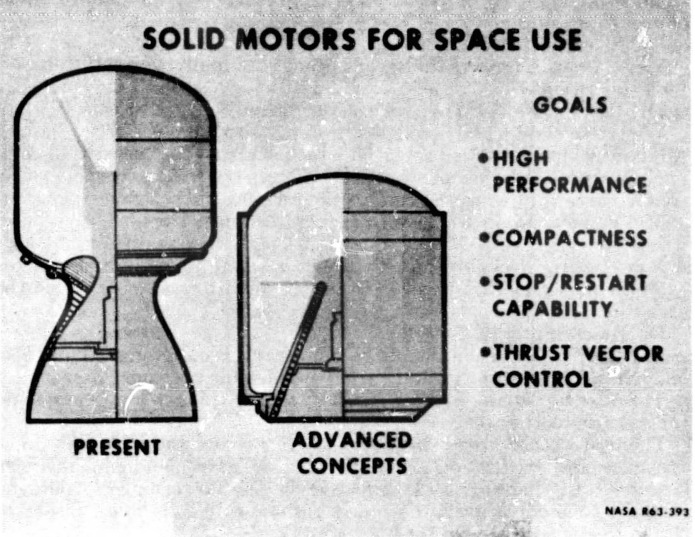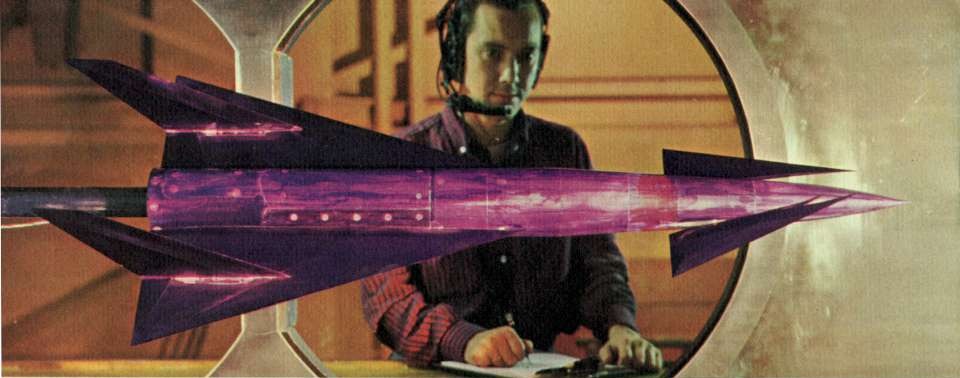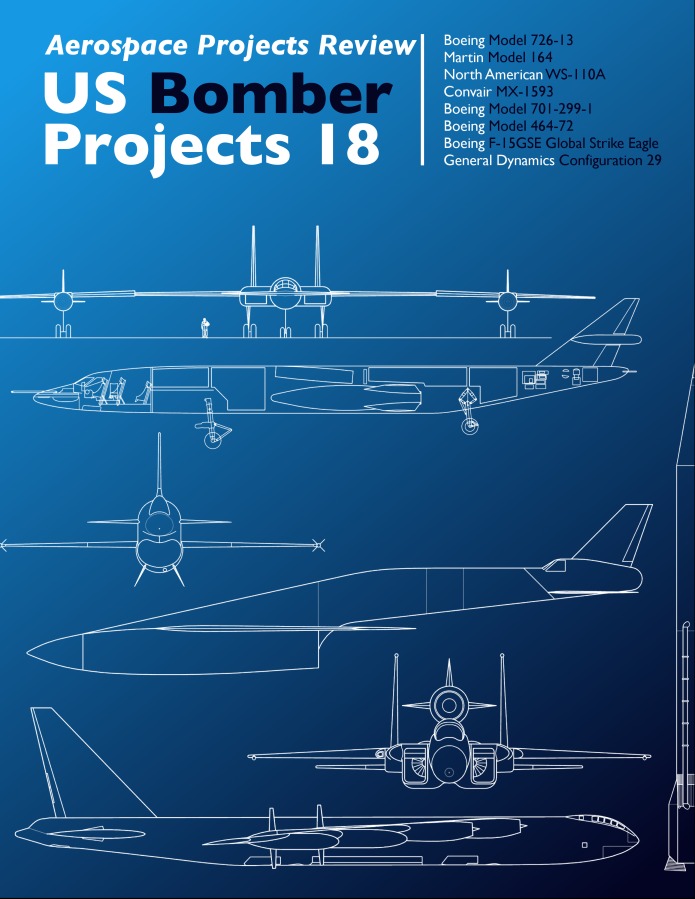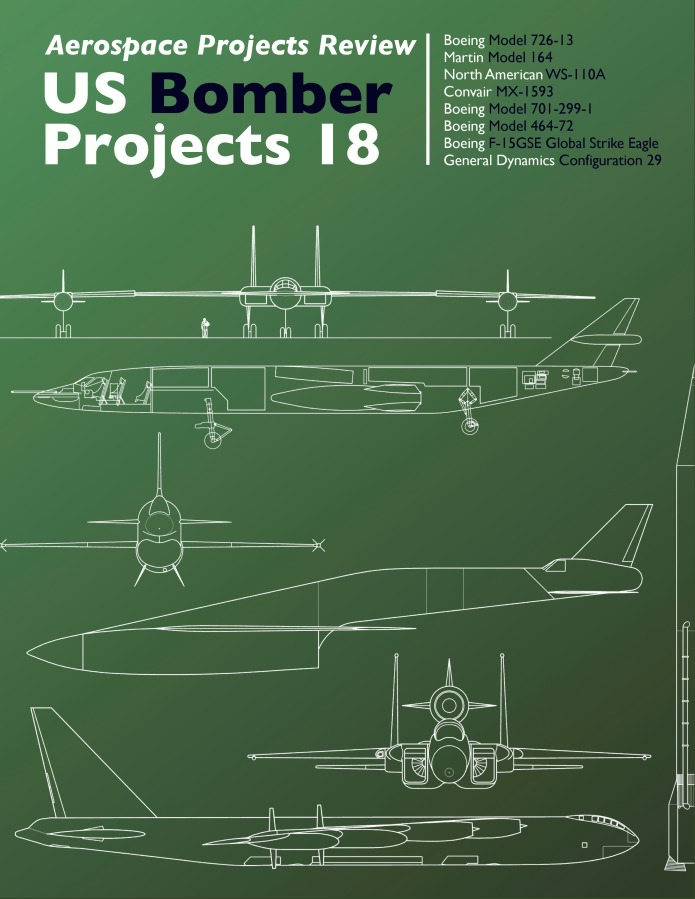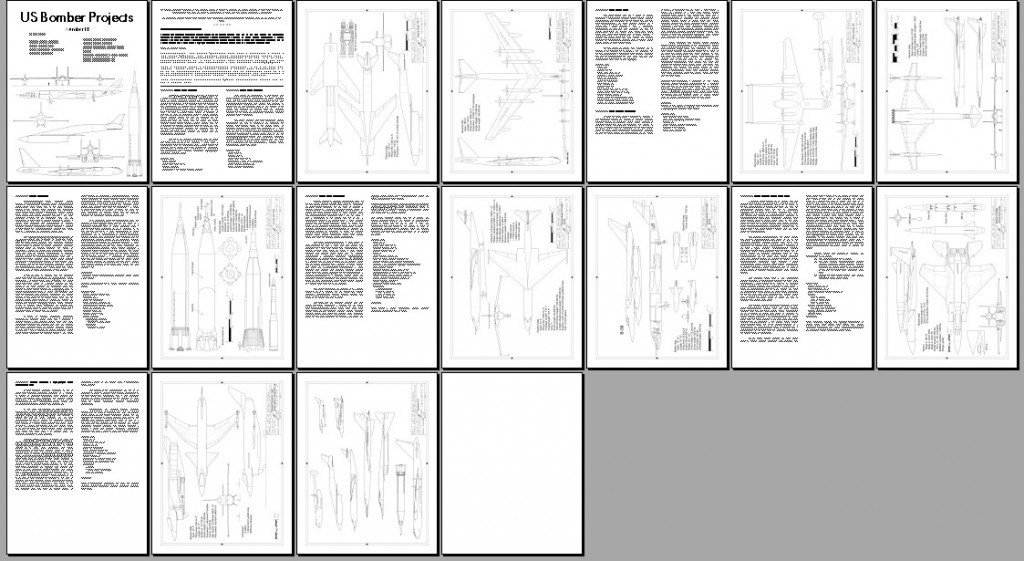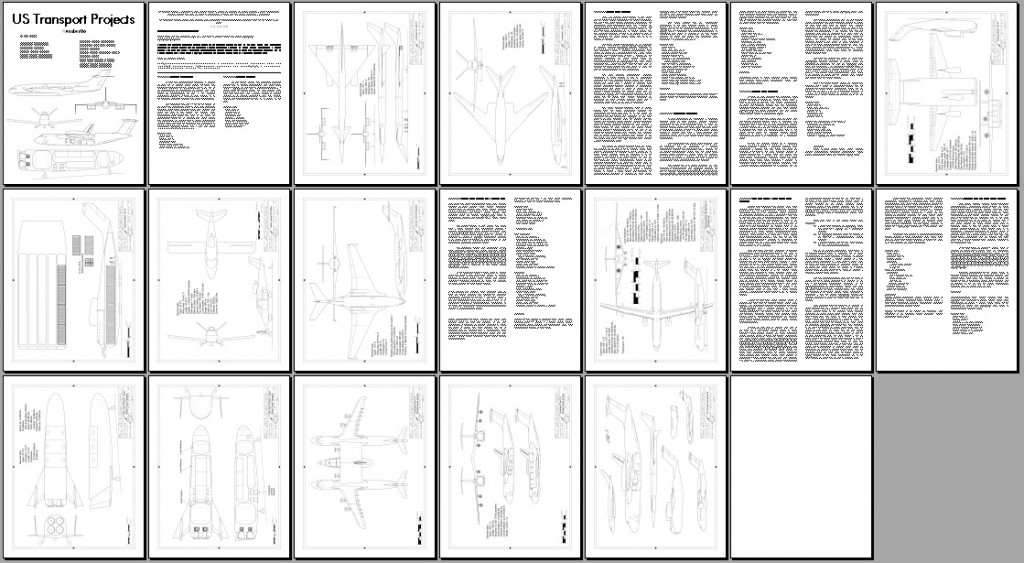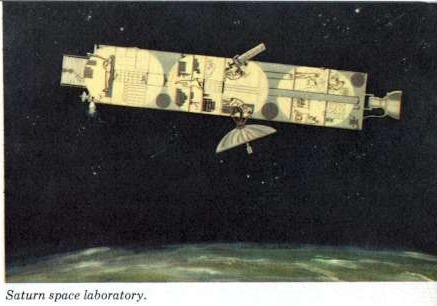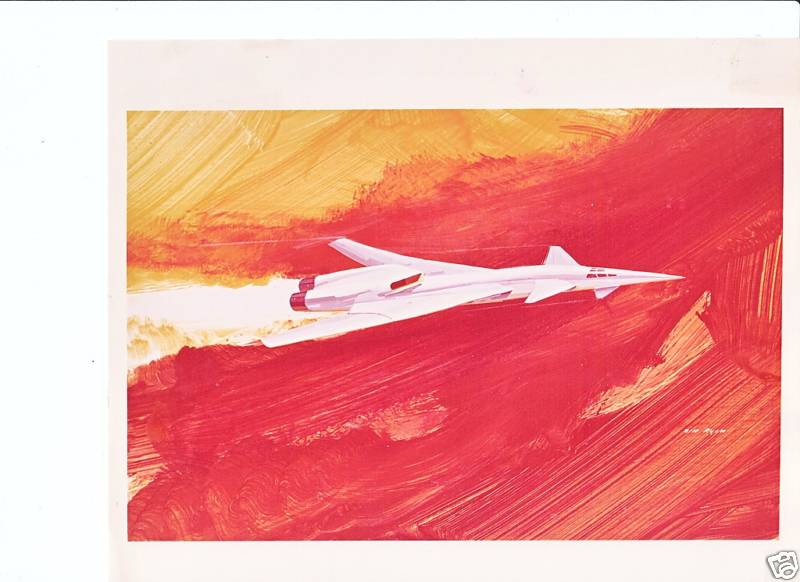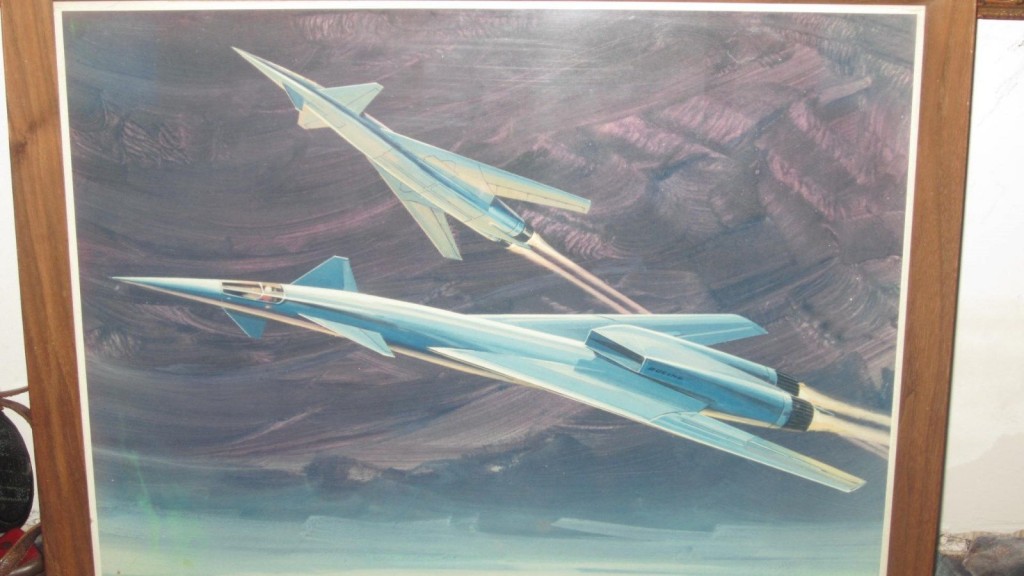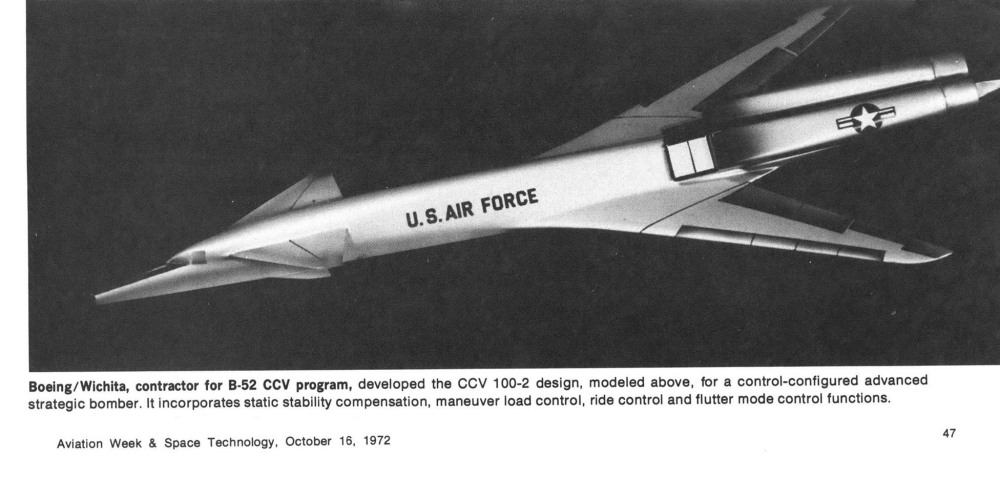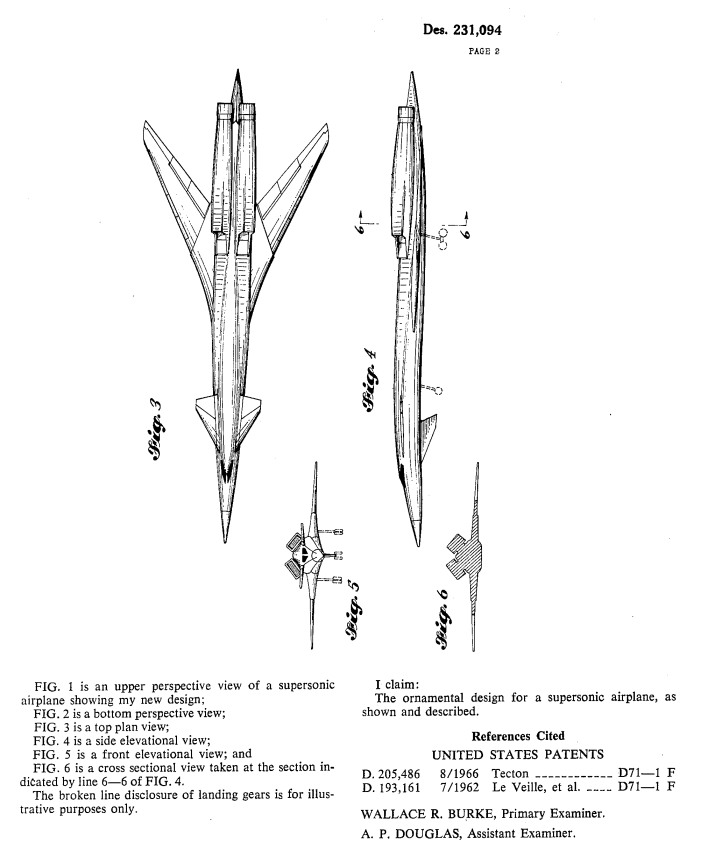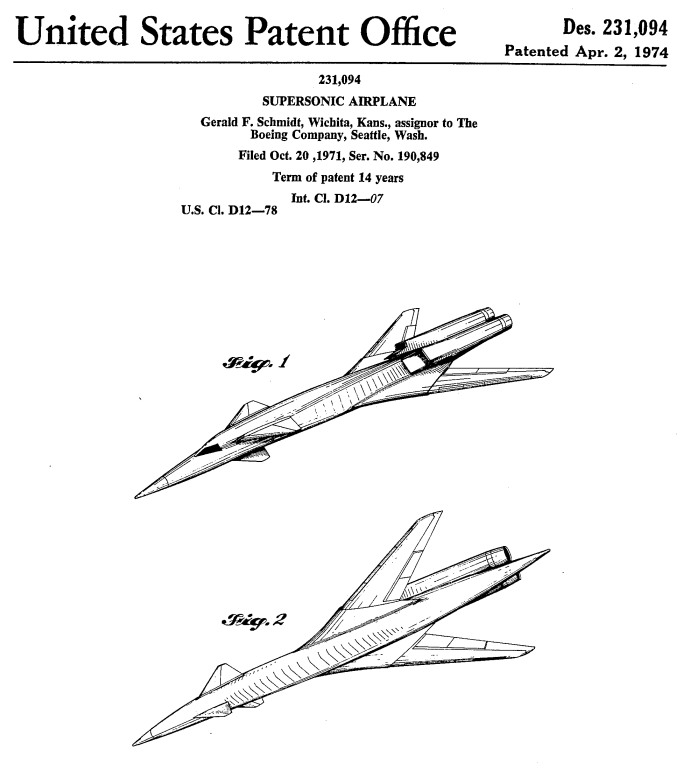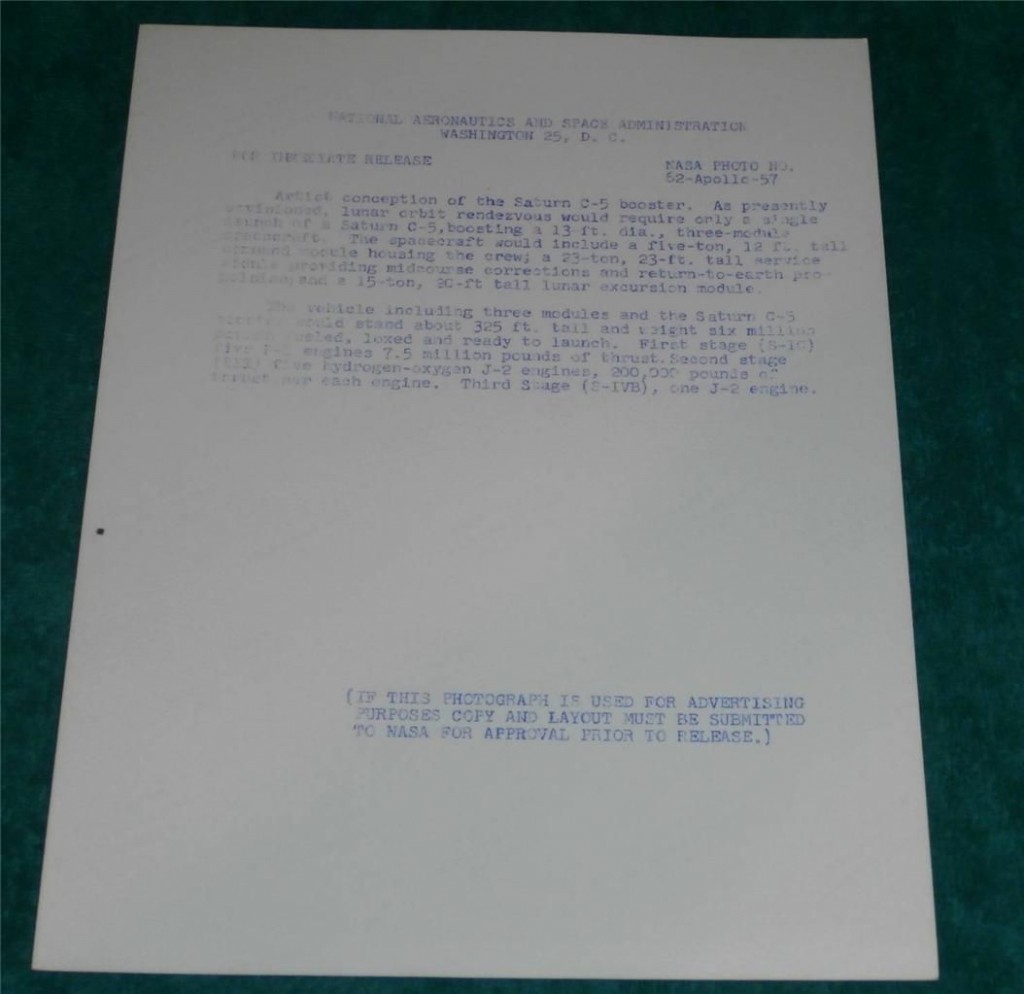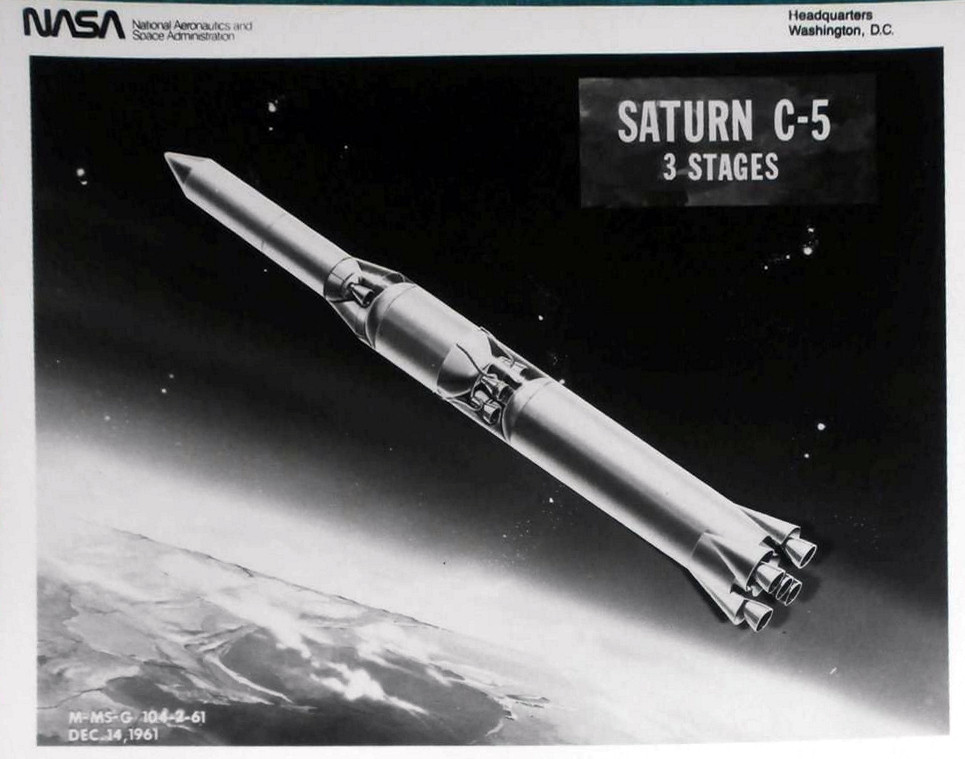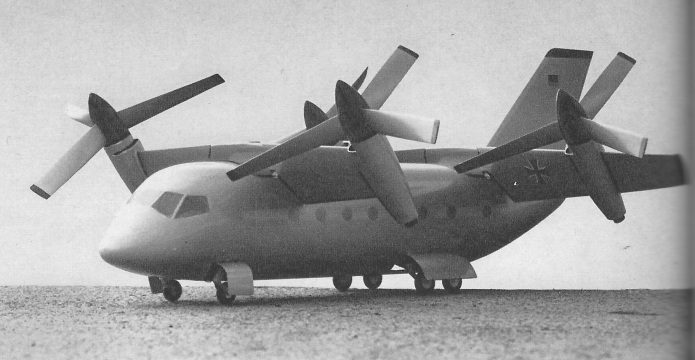Side-view diagram of a Boeing concept for a hydrogen-fueled supersonic bomber from 1956. This monster is shown to scale with a North American XB-70. More info and diagrams of this are in US Bomber Projects issue 9.
A NASA illustration of an advanced solid rocket motor concept, dated 1963. The most obvious difference between the “present” and “advanced” design was the buried nozzle. By properly shaping the solid propellant grain, the motor would perform normally but with a minimum of unused internal volume; this allowed the motor to be substantially shorter than the conventional design. This would make the associated interstage section equivalently shorter, lighter and cheaper. And by shortening and lightening the interstage, the launch vehicle would be shorter, lighter and stronger, with slightly sturdier structural dynamics.
The advantages of a more compact motor like this are pretty obvious. The disadvantages, maybe less so. The most apparent disadvantage is the *need* for far more advanced materials. That buried rocket nozzle is shown to be quite thin, thinner than the “present” design, yet it would be subjected to horrifying heating rates on *both* sides. There are few materials that could withstand that and retain any sort of structural strength.
Additionally: the desire is shown for thrust vectoring. Numerous options for that are available for the conventional nozzle… but it would be much harder with a buried nozzle. It might be easiest to simply gimbal the entire motor. Stop/restart capability has been achieved with solid rockets, but neither design show here provides for that. It is a non-trivial feature.
The igniter is show to be a small rocket motor suspended within the nozzle, directing it’s exhaust forward into the bore volume of the main motor. Variations on this sort of igniter are quite common for relatively short and stubby upper stage motors such as these.
A photo of a NASA wind tunnel model of a hypersonic aircraft configuration. The circa 1960 NASA brochure (promoting the organization to college students) that included this provided no further information, but I’m reasonably sure I’ve seen the wind tunnel test report on this, calling it a reusable booster or reusable launch vehicle. If that’s the case, the upper stages and payload were *probably* going to be carried on the things back.
I admit that the USBP series looks kinda… bland. It’s text and line drawings; not a whole lot can be done to jazz that up. Especially since I have no head for graphics design whatsoever apart from layout diagrams.
Still, one reader sent me a mockup of a revised cover of USBP #18:
Things are moved around a little bit, but the obvious change is the addition of color. The suggestion was also made to consider color-coding each title in the USXP series. Just off the top of my head, I came up with:
Bombers: Olive Drab
Spacecraft: Black
Launch Vehicles: Blue on bottom, transitioning to black at the top
Fighters: slightly bluish gray (like the F-15 or F-22)
Transports: ??
VTOL: ??
The USBP#18 cover was re-done to reflect this, thusly:
Thoughts? Is this more appealing?How about color-coding… good idea or not? And if so, what colors?
I tried something vaguely like this once before, with USBP#05.
This is not a temporary sale, but the new pricing structure. If you go HERE, you can buy downloadables for half off by buying in quantities as low as six.
Now available: two new US Aerospace Projects titles.
US Bomber Projects #18
US Bomber Projects #18 is now available (see HERE for the entire series). Issue #18 includes:
- Boeing Model 726-13: A nuclear pwoered bomber with the cockpit in the tail
- Martin Model 164: A pre-war high altitude twin-tailed bomber
- North American WS-110A: An early concept for what became the B-70, with “floating wingtips”
- Convair MX-1593: An Early, large five-engined Atlas ICBM concept
- Boeing Model 701-299-1: The final XB-59 supersonic bomber design
- Boeing Model 464-72: A B-52 with pusher turboprops
- Boeing F-15GSE Global Strike Eagle: An unmanned F-15 with a giant missile on its back General Dynamics – Light Weight Attack Configuration 29: An advanced ground attacker with vectored thrust
USBP #18 can be downloaded as a PDF file for only $4.25:
——–
——
US Transport Projects #6
US Transport Projects #06 is now available (see HERE for the entire series). Issue #06 includes:
- Lockheed CL-408-15: An early Mach 3 SST
- Lockheed L-155-4: A very early 8-engine jetliner
- Boeing Model 754-4V: A very-wide-bodied cargo hauler for Husky
- Gates Learjet PD1502A: A four-seater with a turbofan
- Convair Comet Seaplane: An American idea for turning a British jetliner into Flying Boat
- Lockheed Twin C-5 Shuttle Carrier Aircraft: Two C-5’s mated together to carry a Shuttle between them
- Boeing Model 765-096 Rev A “SUGAR Volt”: A hybrid jetliner
- CRC HOT EAGLE – Super Global Troop Transport: Finally, hard data on a rocket transport for Special Forces and Marines
USTP #06 can be downloaded as a PDF file for only $4.25:
——–
——
And don’t forget…
US Fighter Projects #1 and US VTOL Projects #1 are still new and still available!
A sadly tiny illustration of a “Saturn Space Laboratory” from a circa 1960 NASA brochure (promoting the organization to college students). This looks like something halfway between MOL and Skylab; three pressurized modules in a “wet lab” space station. Diameter looks to be 10 feet, same as the Titan booster; early concepts for the Saturn called for the use of the Titan first stage to be the second stage of the Saturn I, with the second stage of the Titan being the third stage of the Saturn. This may well represent a Titan I or II first stage/Saturn I second stage as a space lab.
Given the entertainingly toxic nature of the Titan II propellants, I’d guess this was an earlier Titan I-based concept.
This image was passed along to me; it came from an ebay auction from some time in the past. No further info than this illustration, but it is clearly a Boeing “control configured vehicle” bomber concept.
I know it’s a Boeing design because a year and a half ago I lost out on an ebay auction for another piece of concept art showing the same aircraft, this time with “Boeing” clearly visible on the engine nacelle:
And I know it’s a Controlled Configured Vehicle because in the early 1970’s, Boeing studied a bomber that was very similar in configuration to this, known as the “CCV-100-2.” There are some obvious differences, such as the cockpit canopies and the engine inlets, but the overall configurations are very similar. The CCV-100-2 received a tiny bit of press in Aviation Week, and was granted a design patent for the overall shape. Sadly, I do not have anything on performance or dimensions; if anyone *does* know more about this, please let me know.
Some photos (from ebay) of a NASA PR glossy from December, 1961, showing the then-current Saturn C-5 configuration. Note the fairly obvious signs of some retouching of the engines on the first stage… either the engines were originally larger, or they were larger in number. Note the lack of the small but distinctive stabilizing fins on the first stage.
A mid-1960’s German (VFW/Heinkel) concept for a VTOL passenger transport, a quad-tilt-wing design, with capacity for 40 passengers or 13,200 lbs of cargo.
I’ve uploaded a two-page article from the era on the VC400. It is in the 2016-03 APR Extras Dropbox folder, available to all $4+ APR Patreon patrons. If interested, check out the APR Patreon.

